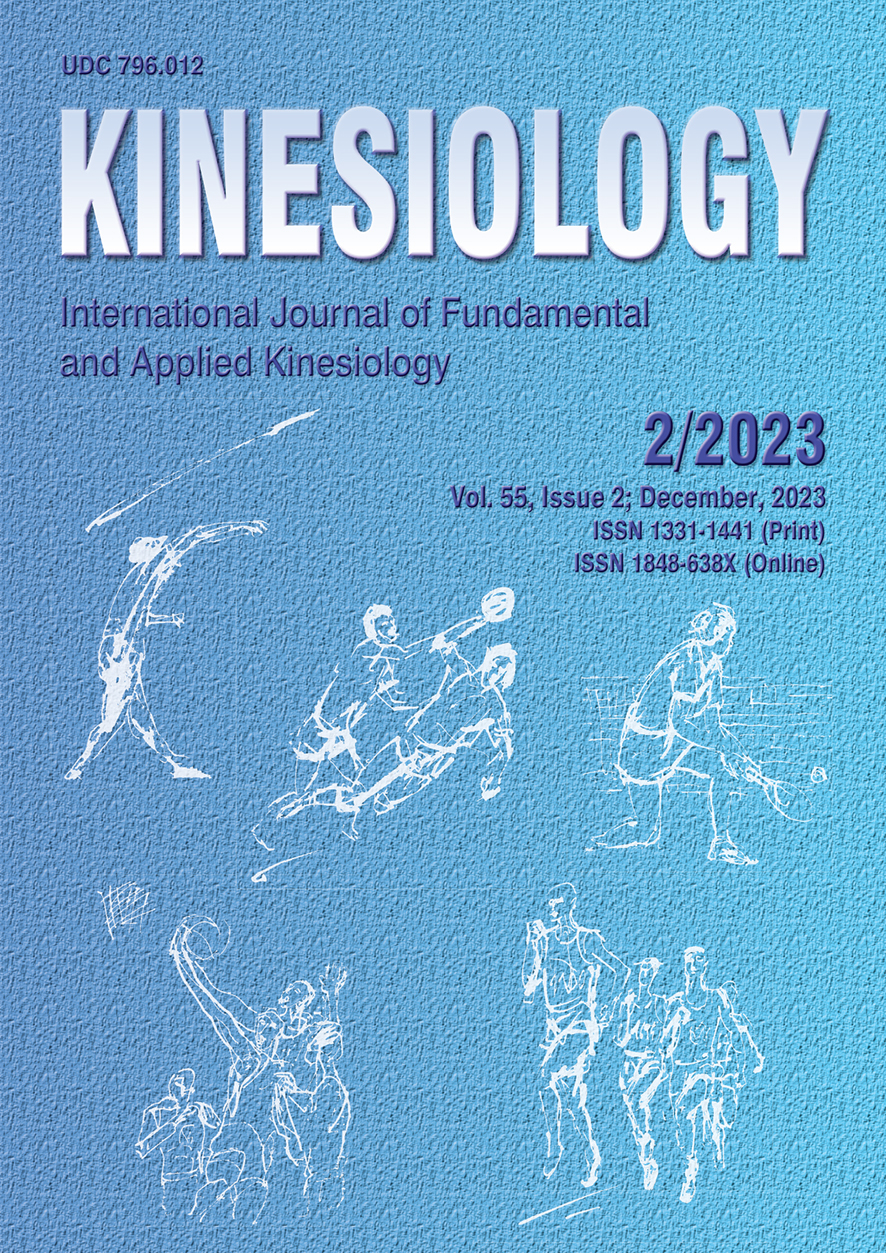METABOLIC RESPONSE DURING HIGH-INTENSITY INTERVAL EXERCISE AND RESTING VASCULAR AND MITOCHONDRIAL FUNCTION IN CROSSFIT PARTICIPANTS
Abstract
High-intensity functional training (HIFT) can play a major role in preventing cardiometabolic disease. The majority of HIFT interventions incorporate CrossFit (CF) training. We measured aerobic capacity, metabolic response during high-intensity interval exercise (HIIE), resting mitochondrial oxidative capacity, and resting vascular function in adults who participated in CF training (> one year) vs. a sedentary group completing <2 h·wk-1 of structure exercise for > one year (SED). Twenty-one participants were recruited (CF n = 13 vs. SED n = 8). CF participants had a 33.0% greater relative VO2 peak (p<.001) and lower body fat percentage (CF = 18.6 [3.8] vs. SED = 30.3 [8.4]; p<.001). CF participants had higher exercising substrate oxidation when expressed as absolute and body weight relative values (p<.013), but not when expressed relative to lean mass (p>.200). CF participants had greater mitochondrial oxidative capacity (p=.014). There were no differences in large artery function, but CF participants had greater baseline arterial diameter (p=.004) and faster reperfusion following arterial occlusion (p<.05). These data support HIFT programs’ effectiveness in improving fitness, weight status, and metabolic, mitochondrial, and vascular function.
Key words: high-intensity functional training, CrossFit, metabolism, vascular function
Downloads
Published
How to Cite
Issue
Section
License

This work is licensed under a Creative Commons Attribution-NonCommercial 4.0 International License.
At Faculty of Kinesiology we recognize that access to quality research is vital to the scientific community and beyond. Kinesiology is non-profit journal and all costs of publishing and peer review process are covered by the publisher itself or other funding sources like Ministry of Science and Education of the Republic of Croatia. Full text papers are also available free of charge at http://hrcak.srce.hr/kineziologija. There are no restrictions on self archiving of any form of paper (preprint, postprint and publisher's version).
Articles are distributed under the terms of the CC BY - NC 4.0
Kinesiology does not charge any fees to authors to submit or publish articles in our journal.


